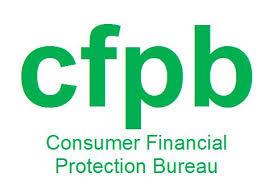In a wild and unchecked political election season full of daily insults, allegations, leaked emails, inappropriate behavior and off-the-cuff tweets, something else quite sinister has gone almost completely unnoticed.
One of the two major political parties vying for the White House in 2016 has openly called for abolishing the Consumer Finance Protection Bureau. Considering what I do for a living, I felt compelled to write a passionate defense of this agency, created five years ago under the Dodd-Frank Wall Street Reform and Consumer Protection Act.
As part of any spirited (yet civil) debate, the opposing side should be heard before I lay out my own case. The party wishing to see the CFPB eliminated sees the agency as a blatant governmental overreach, an additional layer of bloated bureaucracy, limiting access to capital while doling out too many regulatory impositions. Its summary argument is that the CFPB hurts economic growth while stifling small business opportunity.
I couldn’t disagree more if I tried.
Before the Consumer Finance Protection Bureau was created, there was no centralized government agency whose primary mission was to watch out for the little guy—consumers like you and me. It was up to individual states to set their own business climate of what banks, payday lenders and credit card companies could do to stack the deck in their financial favor.
Back in 2007, when Sen. Elizabeth Warren (D-Mass.) championed the CFPB into existence, she compared it to a regulatory agency already in place that consumers come to depend on for the safety of products, the Consumer Safety Protection Bureau. If you’re unsure of what they do on your behalf, be thankful you aren’t bringing a Samsung Galaxy Note 7 on your next airline flight. Both of these agencies literally exist to protect consumers from themselves and the poor choices they are sometimes offered in the world of financial transactions, loans and interest rate based-credit.
One of the congressional opponents of the regulatory agency was quoted as saying that the CFPB, “…invites regulatory excess and abuse.” So, five years in, let’s take a look at this so-called regulatory excess and abuse committed by the CFPB. To date, on behalf of 25 million consumers, over $11 billion dollars have been recovered from over 120 financial institutions. Here, I guess I have to agree on one point—$11 billion sure sounds a lot like excess and abuse to me.
The Consumer Finance Protection Bureau advocates consumer intervention, counseling and coaching on numerous financial literacy initiatives including home mortgages, auto loans, credit cards, prepaid accounts, student debt, saving for retirement, paying for college and household budgeting. And this, according to some of our esteemed politicians, is somehow a bad thing?
You may not have realized the many ways in which the Consumer Finance Protection Bureau works on your behalf, but I’m more than happy to provide a few examples. Since its creation, the CFPB has:
- Rewritten home mortgage rules to provide for truth-in-lending disclosures and quarterly reporting by lending institutions
- Strengthened the enforcement of unfair debt collection practices
- Proposed sweeping changes to the payday lending business model
- Designed consumer protections for prepaid account cards
- Launched a broad review of nationwide student loan servicers
- Created a database of recorded and published consumer complaints
Activities such as these illustrate the many ways that the Consumer Finance Protection Bureau actively fights on behalf of the little guy, consumers like you and me. Consumers like the ones I see walk through the doors of my nonprofit organization, Transformance, Inc. every day. We have the same goals. We both have a deep and abiding desire to help people.
Abolish that? Unthinkable.
Ken Goodgames is the CEO of Dallas-based Transformance Inc., a fully integrated social services nonprofit.





